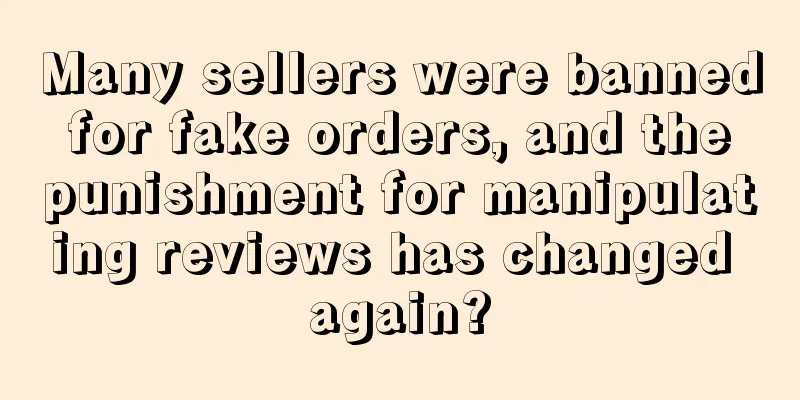Products that cost 50+ yuan are sold for 19.99 yuan! With the price cuts, sellers may face financial difficulties

|
In the first four months of 2021, more than 320,000 new sellers have flocked to Amazon. Their massive entry has had a huge impact on the original order.
For example, the recent "price war" that has troubled sellers , the soaring advertising costs, and the decreasing order volume, in addition, as the prices of raw materials continue to rise, suppliers have also passed the costs on to sellers. Under a series of pressures, sellers' wallets are quickly running out of money.
The price is so high! Products that cost more than 50 yuan are sold for 19.99 yuan
Another seller who also sells toys also said: "Now the top sellers are also reducing the price of new products. Products that cost more than 50 yuan are sold directly for 19.99."
Not only in the toy category, Amazon has now become another Pinduoduo, and sellers are suffering from price wars:
Seller A: I sold it at $35 for two years. Then a new seller came in and the price dropped to $15 in two months. Seller B: Some people sell at 2.99, but Amazon charges 3.31 for logistics. Seller C: Some people only know how to lower prices. I have been holding on for a month, but I couldn’t stand it anymore, so I was forced to lower the price by 2 US dollars.
Faced with such a crazy price war, some sellers are desperate and say: "I want to sell at a high price, but everyone in the market is selling at a low price, so I will sell at a loss, and I will sell as many as I can."
In fact, it is extremely undesirable to spend money madly to make concessions and grab market share, and to look forward to being the last one to reap the dividends and price increases.
Because in a price war, sellers will face only two possible outcomes: one, the capital chain breaks and they are forced to exit the market; two, the product’s vitality is overdrawn and there is no hope of raising prices.
Just like a seller analyzed, your ideal is: lower prices - strategic losses - orders surge - crazy restocking - reduce factory prices - increase your own profits - raise prices again, and the product will be successful. In reality: lower prices - other sellers follow suit - big sellers lower prices - you still can't sell - advertising CPC gets higher and higher - advertising losses - factories ignore you - shipping and restocking losses - then go bankrupt, and the profits of the entire category decline.
Costs continue to rise, advertising costs soar by half
A new seller said: “I still have no orders from Amazon today, but all my advertising fees have been paid. My account balance is -$300. Today is another day of wasted work.”
Some sellers who were scared off by the advertising fees found that they could make more money without advertising: "When I advertised, it was worse than when I didn't. The key is that the profit is low. I only made 10 yuan per order with 30 yuan advertising fee. From then on, I stopped advertising."
Although newbie sellers are enthusiastic about Amazon, the advertising fees are one of the reasons that scare them away. One newbie seller said: "Every time a customer places an order with my trust, I feel passionate and hopeful about Amazon. However, when I see the advertising fees, my mood plummets again..."
How "discouraging" are the specific advertising fees ? Here's what the following sellers would say: "I sell on Amazon Japan, and each click costs 25 yen. I have a daily budget of 100 yen, but there is no hope after working for half a year."
In addition to the soaring advertising costs, the price of raw materials is still rising. From the Spring Festival to May this year , raw materials have risen sharply for at least two rounds, and many suppliers have stopped quoting prices. Although many sellers are doing good business, their profits will be eaten up by the rising prices of raw materials. One seller said that the contracts were signed several months ago, and now the price of raw materials has skyrocketed, making it difficult to do business.
The soaring advertising costs and raw materials mean that sellers’ costs are high, and the money actually in their pockets is less. In addition, logistics and labor costs are all very expensive. Now there is also a "price war", so capital turnover has become a headache for some sellers.
The editor learned about a channel dedicated to cross-border e-commerce financing. Huafuda has established business cooperation relationships with a number of state-owned banks to provide unsecured and unsecured pure credit loans to export e-commerce companies. It can be used for both public and private purposes, with a maximum amount of up to 10 million yuan, an annualized interest rate of 3.85%~9.86%, and flexible repayment methods.
As soon as the product was launched, many e-commerce companies have inquired about it. According to the actual operating conditions of the e-commerce companies, Huafuda will match different loan products. The entire approval process is fast and simple, meeting the funding needs of e-commerce sellers in the first place and "saving" the sellers' wallets.
For more details, please click on the link: https://www.insurance188.com/bank/index.html?channel=ennews
Huafuda Price war |
<<: Prime Day will be held on June 21 and 22, Shopee clears out inactive products
Recommend
Temu Korea is here too, giving out NT$40,000 coupons to new members!
Temu just opened its Japanese site a while ago . ...
Health sector budget increased by 138%! India's health market is expected to grow
On February 1, 2020, India's 2021 fiscal budg...
Counting COVID-19 patients by hand? Japan's operation shocked everyone
According to foreign media reports, on the 17th ,...
Can the disbanding of a group become a business opportunity? Daft Punk-related searches increased by 4517%!
After nearly 30 years of making music, Daft Punk ...
What is Rakuten Super Logistics? Rakuten Super Logistics Review, Features
Rakuten Super Logistics is an order fulfillment an...
Two major brands are defending their rights, and some sellers have received freeze notices
Two new brands have been reported, sellers please...
What is houseofvoltaire? houseofvoltaire Review, Features
houseofvoltaire commissions and sells unique artwo...
FBA lost goods seriously! Sellers: It is too difficult to claim compensation
This year, Amazon FBA has many problems! The prob...
What is DaoMi Cloud? DaoMi Cloud Review, Features
DaoMi Cloud is a one-stop marketing SaaS and preci...
What is ModaQueen? ModaQueen Review, Features
ModaQueen is an American fashion brand shopping w...
What is Paysera? Paysera Review, Features
Paysera Wallet is a Lithuanian electronic wallet ...
What is Luxury Promise? Luxury Promise Review, Features
Founded by Sabrina Sadiq in 2017, Luxury Promise i...
Offline bookstores open, US e-book market sales decline
According to foreign media data, 2020 was the fir...
Urgent! Another infringement case occurred in the United States, and some sellers have been frozen
In the overseas e-commerce market, the toy catego...
AliExpress continues to fight against internal competition: subsidies for on-time delivery during the Spring Festival, merchants can take flexible vacations
After launching the "anti-involution" c...









